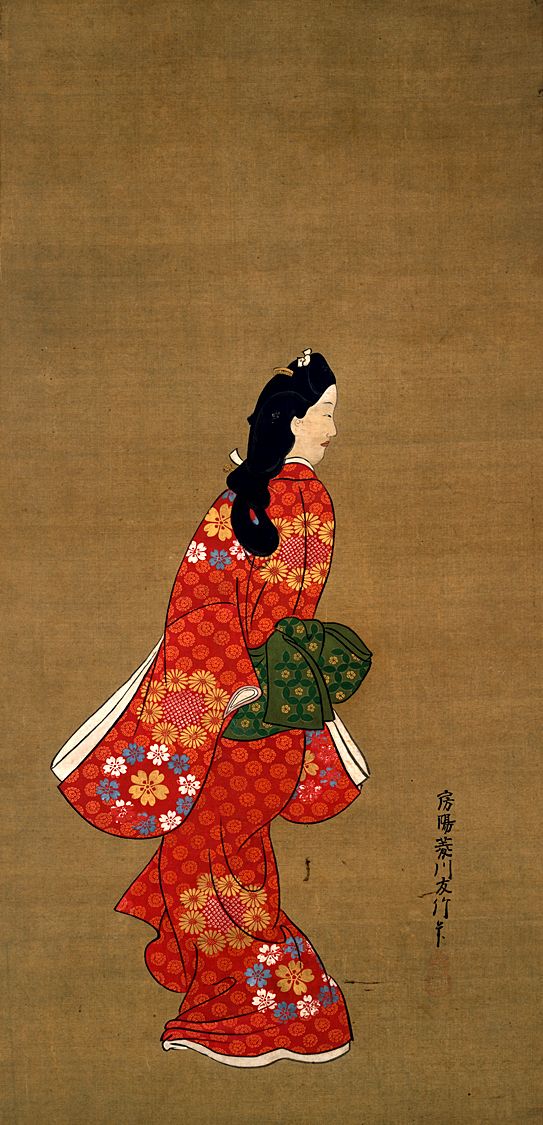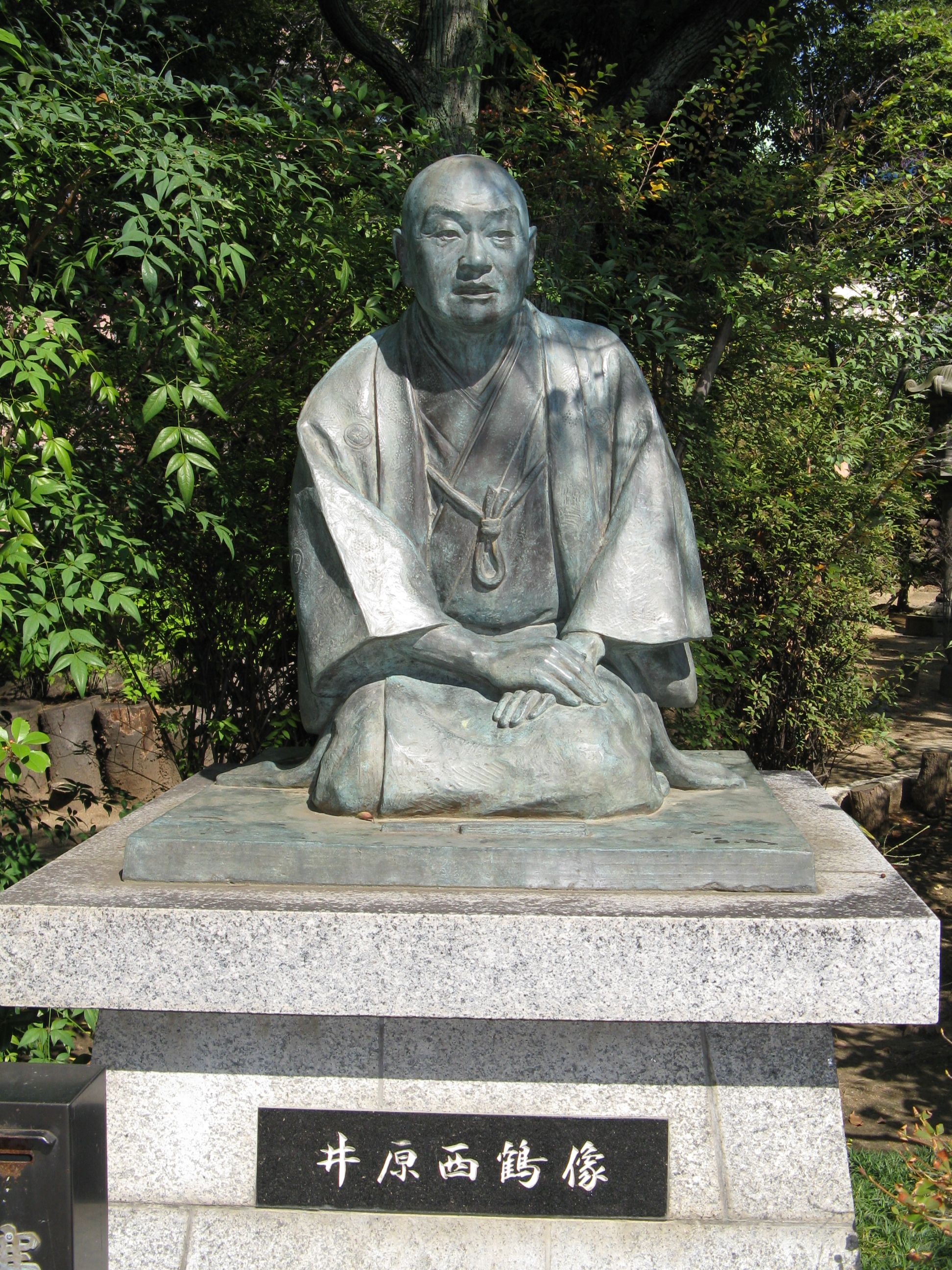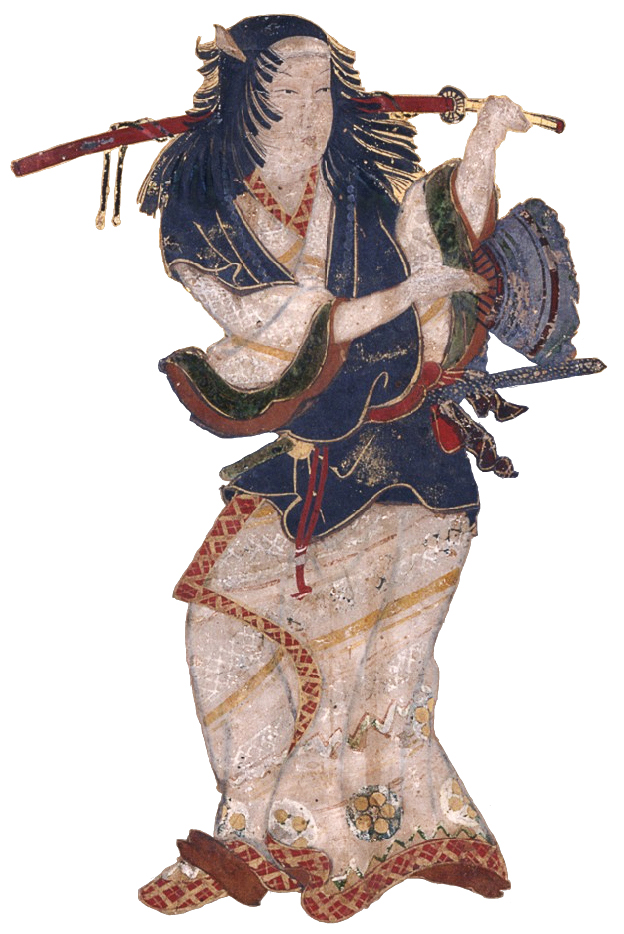|
Ukiyo
is the Japanese term used to describe the urban lifestyle and culture, especially the pleasure-seeking aspects, of Edo period Japan (1600–1867). Ukiyo culture culture developed in Yoshiwara, the licensed red-light district of Edo (modern-day Tokyo), the site of many brothels frequented by Japan's growing middle class. A prominent author of the genre was Ihara Saikaku, who wrote '' The Life of an Amorous Woman''. culture also arose in other cities, such as Osaka and Kyoto. This middle class, newly rich merchants known as chōnin, were unable to move up the social ladder due to the segregated class system imposed by the Tokugawa shogunate during the Edo period. Chōnin were the lowest class of four, below warriors, farmers and artisans. Due to being economically powerful but socially confined, their assets were turned to conspicuous consumption, arts and culture. The term in medieval Japan was associated with Buddhism and meant "this transient, unreliable world". ... [...More Info...] [...Related Items...] OR: [Wikipedia] [Google] [Baidu] |
Ukiyo-e
is a genre of Japanese art that flourished from the 17th through 19th centuries. Its artists produced woodblock printing, woodblock prints and Nikuhitsu-ga, paintings of such subjects as female beauties; kabuki actors and sumo wrestlers; scenes from history and folk tales; travel scenes and landscapes; Flora of Japan, flora and Wildlife of Japan#Fauna, fauna; and Shunga, erotica. In 1603, the city of Edo (Tokyo), Edo (Tokyo) became the seat of the ruling Tokugawa shogunate. The class (merchants, craftsmen and workers), positioned at the bottom of Four occupations, the social order, benefited the most from the city's rapid economic growth. They began to indulge in and patronize the entertainment of kabuki theatre, geisha, and oiran, courtesans of the Yūkaku, pleasure districts. The term ('floating world') came to describe this hedonistic lifestyle. Printed or painted ukiyo-e works were popular with the class, who had become wealthy enough to afford to decorate their homes wit ... [...More Info...] [...Related Items...] OR: [Wikipedia] [Google] [Baidu] |
Ukiyo-zōshi
is the first major genre of popular Japanese fiction, written between the 1680s and 1770s in Kyoto and Osaka. ''Ukiyo-zōshi'' literature developed from the broader genre of '' kana-zōshi'', books written in the ''katakana'' vernacular for enjoyment, and was initially classified as ''kana-zōshi''. The term "''ukiyo-zōshi''" first appeared in 1710 in reference to amorous or erotic works, but the term later came to refer to literature that encompassed a variety of subjects and aspects of life during the Edo period with the most common being that of the ordinary townsperson. Books of this genre included ''ukiyo-e'' illustrations often made by the most prominent artists at the time. The most prominent author of ''ukiyo-zōshi'' was Ihara Saikaku, whose works were not regarded as high literature at the time, but became popular and were key to the development and spread of the new genre. Saikaku was preceded by and worked at the same time as many other authors such as Shogetsudo Fuka ... [...More Info...] [...Related Items...] OR: [Wikipedia] [Google] [Baidu] |
Kiyonaga Bathhouse Women-2
Torii Kiyonaga (; 1752 – June 28, 1815) was a Japanese ukiyo-e artist of the Torii school. Originally Sekiguchi Shinsuke, the son of an Edo bookseller, from Motozaimokuchō Itchōme in Edo, he took on Torii Kiyonaga as an art name. Although not biologically related to the Torii family, he became head of the group after the death of his adoptive father and teacher Torii Kiyomitsu. The master Kiyomitsu died in 1785; since his son died young, and Kiyotsune, Kiyonaga's senior, was a less promising artist, Kiyonaga was the obvious choice to succeed Kiyomitsu to leadership of the Torii school. However, he delayed this for two years, likely devoting time to his ''bijin-ga'' and realizing the immense responsibility that would fall on his shoulders once he took over the school. Thus, in 1787, he began organizing the production of kabuki signboards and the like, which the school held a near monopoly on. He also began to train Kiyomitsu's grandson, Torii Kiyomine, who was to succe ... [...More Info...] [...Related Items...] OR: [Wikipedia] [Google] [Baidu] |
Edo Period
The , also known as the , is the period between 1600 or 1603 and 1868 in the history of Japan, when the country was under the rule of the Tokugawa shogunate and some 300 regional ''daimyo'', or feudal lords. Emerging from the chaos of the Sengoku period, the Edo period was characterized by prolonged peace and stability, urbanization and economic growth, strict social order, Isolationism, isolationist foreign policies, and popular enjoyment of Japanese art, arts and Culture of Japan, culture. In 1600, Tokugawa Ieyasu prevailed at the Battle of Sekigahara and established hegemony over most of Japan, and in 1603 was given the title ''shogun'' by Emperor Go-Yōzei. Ieyasu resigned two years later in favor of his son Tokugawa Hidetada, Hidetada, but maintained power, and defeated the primary rival to his authority, Toyotomi Hideyori, at the Siege of Osaka in 1615 before his death the next year. Peace generally prevailed from this point on, making samurai largely redundant. Tokugawa sh ... [...More Info...] [...Related Items...] OR: [Wikipedia] [Google] [Baidu] |
Cultural History Of Japan
Japanese culture has changed greatly over the millennia, from the country's prehistoric Jōmon period, to its contemporary modern culture, which absorbs influences from Asia and other regions of the world. Since the Jomon period, ancestral groups like the Yayoi period, Yayoi and Kofun period, Kofun, who arrived to Japan from Korea and China, respectively, have shaped Japanese culture. Rice cultivation and centralized leadership were introduced by these groups, shaping Japanese culture. Chinese dynasties, particularly the Tang dynasty, have influenced Japanese culture throughout history and brought it into the Sinosphere. After 220 years of isolation, the Meiji era opened Japan to Western influences, enriching and diversifying Japanese culture. Japanese popular culture, Popular culture shows how much contemporary Japanese culture influences the world. Identity There are two competing hypotheses that try to explain the lineage of the Japanese people. The first hypothesis p ... [...More Info...] [...Related Items...] OR: [Wikipedia] [Google] [Baidu] |
Geisha
{{Culture of Japan, Traditions, Geisha {{nihongo, Geisha{{efn, {{IPAc-en, lang, ˈ, ɡ, eɪ, ., ʃ, ə, {{IPA, ja, ɡei.ɕa, ɡeː-, lang{{cite book, script-title=ja:NHK日本語発音アクセント新辞典, publisher=NHK Publishing, editor=NHK Broadcasting Culture Research Institute, date=24 May 2016, lang=ja, 芸者, also known as {{nihongo, , 芸子, geiko{{efn, {{IPA, ja, ɡei.ko, ɡeː-, lang, {{citation needed span, in Kyoto and Kanazawa, date=May 2025 or {{nihongo, , 芸妓, geigi{{efn, {{IPA, ja, ɡeꜜi.ɡi, ɡeꜜː-, -ŋi, lang , are female Japanese people, Japanese performing arts, performing artists and entertainers trained in performing arts#Japan, traditional Japanese performing arts styles, such as Japanese traditional dance, dance, Music of Japan, music and singing, as well as being proficient conversationalists and hosts. Their distinct appearance is characterised by long, trailing kimono, nihongami#geisha, traditional hairstyles and {{transliteration, ja, o ... [...More Info...] [...Related Items...] OR: [Wikipedia] [Google] [Baidu] |
Ihara Saikaku
was a Japanese poet and creator of the " floating world" genre of Japanese prose (''ukiyo-zōshi''). His born name may have been Hirayama Tōgo (平山藤五), the son of a wealthy merchant in Osaka, and he first studied haikai poetry under a follower of Matsunaga Teitoku and later studied under Nishiyama Sōin of the Danrin school of poetry, which emphasized comic linked verse. Scholars have described numerous extraordinary feats of solo haikai composition at one sitting; most famously, over the course of a single day and night in 1677 Saikaku is known to have composed 1,600 haikai verses and an amazing 23,500 verses in a single day and night in 1684. Later in life he began writing racy accounts of the financial and amorous affairs of the merchant class and the demimonde. These stories catered to the whims of the newly prominent merchant class, whose tastes of entertainment leaned toward the arts and pleasure districts. Biography Ihara Saikaku was born in 1642 into a w ... [...More Info...] [...Related Items...] OR: [Wikipedia] [Google] [Baidu] |
Yoshiwara
was a famous ( red-light district) in Edo, present-day Tokyo, Japan. Established in 1617, Yoshiwara was one of three licensed and well-known red-light districts created during the early 17th century by the Tokugawa shogunate, alongside Shimabara in Kyoto in 1640Avery, Anne Louise. ''Flowers of the Floating World: Geisha and Courtesans in Japanese Prints and Photographs, 1772–1926'' xhibition Catalogue(Sanders of Oxford & Mayfield Press: Oxford, 2006) and Shinmachi in Osaka. Created by the shogunate to curtail the tastes of and sequester the nouveau riche (merchant) classes, the entertainment offered in Yoshiwara, alongside other licensed districts, would eventually originate geisha, who would become known as the fashionable companions of the classes and simultaneously cause the demise of , the upper-class courtesans of the red-light districts. History 17th and 18th century The licensed district of Yoshiwara was created in the city of Edo, near to the area today ... [...More Info...] [...Related Items...] OR: [Wikipedia] [Google] [Baidu] |
Iki (aesthetics)
is a Japanese aesthetical ideal of subdued displays of taste and/or wealth, with an emphasis on belying, on first glance, the efforts taken to appear stylish. It is thought to have originated amongst the chōnin, merchant classes of Edo (modern-day Tokyo) in Edo period Japan, subverting class through an expression of material wealth that formed an aesthetic language specifically aimed at one's peers.Nussbaum, Louis-Frédéric. (2005). "''Iki'' in ; n.b., Louis-Frédéric is pseudonym of Louis-Frédéric Nussbaum, ''see'Deutsche Nationalbibliothek Authority File. Sometimes misunderstood in the West as the archetypal or stereotypical aesthetics of Cool Japan, Japanese culture, is instead a cornerstone of traditional Japanese aesthetic appeal and thought. Both geisha and kimono, amongst other cultural aspects, are thought to have been influenced by and developed through , and remain largely influenced by it to this day. History During the Edo period, a number of edicts were passed ... [...More Info...] [...Related Items...] OR: [Wikipedia] [Google] [Baidu] |
Demimonde
is a French 19th-century term referring to women on the fringes of respectable society, and specifically to courtesans supported by wealthy lovers. The term is French for "half-world", and derives from an 1855 play called , by Alexandre Dumas fils, Alexandre Dumas , dealing with the way that prostitution at that time threatened the institution of marriage. The was the world occupied by elite men and the women who entertained them and whom they kept. History Historically, the height of the was encapsulated by the period known in France as (1871–1914), from the end of the Franco-Prussian War to the beginning of World War I. The twentieth century brought the rise of the New Woman, changing economies and social structures, as well as changing fashions and social mores, particularly in the aftermath of World War I. Prostitution and the keeping of mistresses did not disappear, but the label became obsolete as the 'half-world' changed. Demimondaine became a synonym for a ... [...More Info...] [...Related Items...] OR: [Wikipedia] [Google] [Baidu] |
Kabuki
is a classical form of Theatre of Japan, Japanese theatre, mixing dramatic performance with Japanese traditional dance, traditional dance. Kabuki theatre is known for its heavily stylised performances, its glamorous, highly decorated costumes, and for the elaborate make-up worn by some of its performers. Kabuki is thought to have originated in the early Edo period, when the art's founder, Izumo no Okuni, formed a female dance troupe that performed dances and light sketches in Kyoto. The art form later developed into its present all-male theatrical form after women were banned from performing in kabuki theatre in 1629. Kabuki developed throughout the late 17th century and reached its zenith in the mid-18th century. In 2005, kabuki theatre was proclaimed by UNESCO as an intangible heritage possessing outstanding universal value. In 2008, it was inscribed in the UNESCO Intangible Cultural Heritage Lists, UNESCO Representative List of the Intangible Cultural Heritage of Humanity ... [...More Info...] [...Related Items...] OR: [Wikipedia] [Google] [Baidu] |







